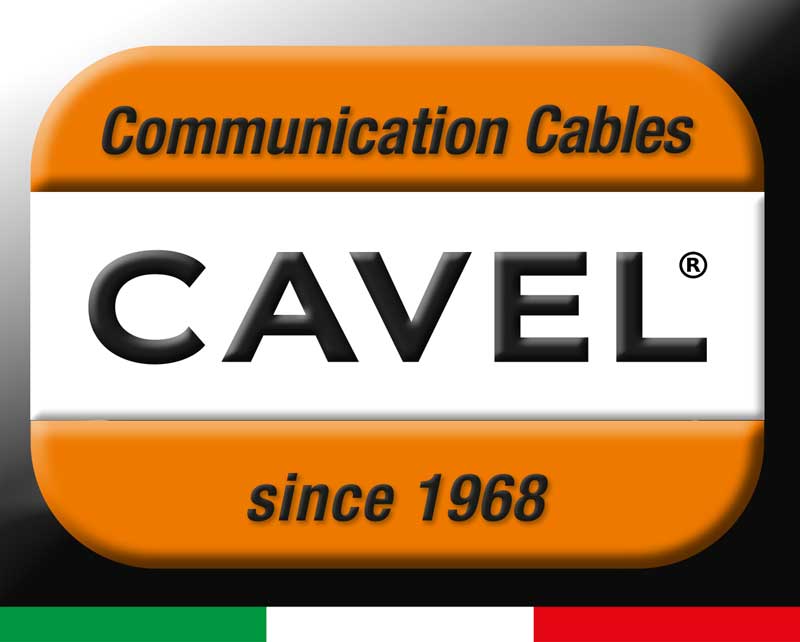Cables are often considered a secondary element to equipment in video surveillance, despite the fact that they are essential to the system functioning correctly. Modern transmission standards, such as HDCVI, AHD, and HDTVI, were developed to allow analog systems to be upgraded without having to replace existing cables. These standards allow the use of high-definition cameras with protocols suitable for transmission over coaxial cables, albeit of lower quality.
However, the use of HD cameras on old RG59 or similar cables has proven to work well only for short distances of a few dozen meters. This is because HD cameras require much more bandwidth than analog cameras, going from 5 MHz (typical of analog) to 150 MHz (typical of 4K HDCVI). As a result, it has become necessary to develop specially designed cables to support the most advanced video surveillance systems, both analog and digital/hybrid, ensuring high performance regardless of the protocol or resolution used (HDCVI, AHD, HDTVI).
Differences and characteristics of video surveillance cables
Italiana Conduttori SRL has developed a series of cables specially designed for video surveillance, called the VS/VSHD series. These cables support the most advanced recording and transmission systems, offering high performance regardless of the resolution or protocol used. Cavel® cables are also available in combination versions, with integrated power cables, simplifying installation by laying a single cable.
In the field of video surveillance, there are two main types of cameras:
- HDCVI, AHD, TVI and ANALOG coaxial cameras (the latter in disuse);
- IP (Internet Protocol) cameras.
For coaxial cameras, Cavel® has developed 4 LSZH coaxial cables that allow sections in the order of hundreds of meters:
- VSHD40 (3.6 mm microcoaxial) for sections up to 250 m;
- VSHD70 for sections up to 400 m;
- VSHD80 for sections up to 500 m;
- VSHD113 for sections up to 700 m;
(The distances indicated refer to use with 4K HDCVI cameras). Italiana Conduttori SRL also offers combined versions of these cables, which include power cables (red and black) with cross sections of 0.5, 0.75 and 1 mm² for separate power supply to coaxial cameras.
For IP cameras, which use Ethernet output, Italiana Conduttori SRL has developed the Cat.5e cable called VS540 in LSZH version. This cable is available both in LAN-only version (for powering cameras according to the PoE - Power over Ethernet - standard), and in combined version with power cables (red and black) with cross-sections of 0.5, 0.75 and 1 mm² for devices with separate power supply.
On the website of Italiana Conduttori SRL (www.cavel.it), in the TECHNICAL SUPPORT / CALCULATION - DROP section, a special calculator can be used to determine the voltage drop of the system by entering the type of cable, the current drawn by the camera, and the length of the cable. This helps to correctly size the power system. You can also find information on the loop resistance (forward + return) of each cable in the relevant section of the data sheets.
Only LSZH sheaths: technical properties and laying tips
Another important feature of all Cavel® cables dedicated to video surveillance, including electrical conductors, is the use of LSZH (Low Smoke Zero Halogen) sheaths, which have several beneficial technical properties. These sheaths are halogen-free and feature the following characteristics:
- non-propagation of flame and fire;
- low smoke emissions;
- no halogen acid fumes;
- UV resistance;
- ideal for indoor and outdoor installation;
- recommended for installation in public places and in all situations where fire safety is required, such as schools, hospitals, banks, airports, etc;
- comply with standard CEI-UNEL 36762, which allows installation in the same conduits along with energy cables up to 400V.
Italiana Conduttori SRL has conducted several tests on their cables, detailed information on which is available on their website.
Physical characteristics of the cables
Installation temperatures: -0 to 50°C
Operating temperatures:
- PVC sheath -30 to 80°C
- LSZH sheath -25 to 80°C
- PE sheath -40 to 80°C
Below is a summary table of tests we have conducted:
| CABLE TYPE | CAMERA TYPE | ||||||
| MODEL | OUTER DIAMETER |
MAX LENGTH |
MAX PULLING FORCE(*) | HDCVI 4K (8 Mpixel = 3840 x 2160) |
AHD 2K (4 Mpixel = 2560 x 1440) |
TVI 2K (4 Mpixel = 2560 x 1440) |
|
| (mm) | (m) | (N) | (kg) | ||||
| VSHD113 | 6,6 | 700 | 150 | 15.3 |  |
 |
 |
| VSHD80 | 5,0 | 500 | 90 | 9,2 |  |
 |
 |
| VSHD70 | 4,0 | 400 | 80 | 8,2 |  |
 |
 |
| VSHD40 | 3,6 | 250 | 50 | 5,1 |  |
 |
 |
(*) Remember that the thinner the cable, the more breakable it is; therefore, when laying, pay attention to the maximum pulling force shown in the table.



